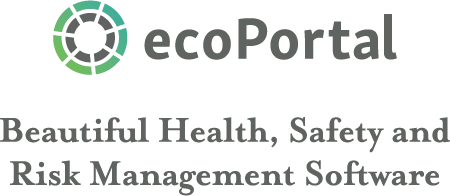New WorkSafe research appeared without fanfare on their website in late March with the unprepossessing title of ‘Segmentation and insights programme: Employers and workers’.
Don’t judge a report by its title; the results are interesting and important.
Since 2019, WorkSafe has been working with Verian (formerly Colmar Brunton) to undertake a large-scale two-yearly survey of workers and employers about their health and safety practices and attitudes. The third survey was out in the field in 2023.
This post outlines some of the more interesting results of the survey. All pictures have been taken directly from the report. The charts are fairly self-explanatory but I have cut off the keys for many of them; green and red triangles indicate statistically significant changes from the previous year.
The study suggests a health and safety system that may be in minor decline. The use of health and safety expert advice and guidance has fallen shortly, there is a small (not yet statistically significant) decline in the safety culture of several industries, and formal worker engagement practices appear to be on the wane.
Turning this slow decline around will take concerted will and effort by everyone in the system. The new Government reforms present an opportunity to do so but we will need to fight for better outcomes.

WorkSafe divides employers into four safety culture archetypes on a spectrum of less-to-more mature.
These range from quite hostile and immature “it’s just common sense" to holistic and mature “care for others.”
Most businesses (57%) are in the two more dynamic safety culture quadrants. The overall numbers in each have remained fairly static between 2021 and 2023 with no statistically significant changes at the overall level.
The picture at an industry level is more interesting. Most industries have remained fairly static in terms of safety maturity (at least to a statistically significant level). The exception is manufacturing, which has seen a 10-point jump from the less mature safety cultures to the more mature ones. The most mature safety cultures are in forestry, health care and social assistance, and manufacturing. The least mature industries are construction and agriculture.
Concerningly, most industries have seen an apparent growth in the least mature safety culture “it’s just common sense” though this change is not statistically significant. This may be a trend to watch out for.


On average, larger employers have more mature safety culture though all four cultures are present across all employer sizes (though the effect isn’t totally linear).
Health and safety advice and guidance
WorkSafe has been asking employers about where they get health and safety information and guidance since 2021. There has been a decline in the number of employers seeking health and safety information and guidance generally and across all categories of advice and guidance except “social media networks.”
I can think of two possible explanations for this decline.
- First, some of the activity in 2021 may have been directed to managing and addressing COVID-19, which had waned by 2023.
- Second, more difficult economic circumstances may have led businesses to focus and invest less in health and safety.


More than a third (34%) of employers had sought advice or services from a health and safety professional (either employed or contracted) in the last 12 months but this was a statistically significant drop of 4% from 2021. This drop was mirrored in the use of health and safety generalists (such as NZISM members) which fell from 28% in 2021 to 24% in 2023.
Smaller businesses were less likely to seek expert advice from health and safety professionals (26% of employers with 5 or less employees sought advice; almost a third of the 78% of employers with 100 or more employees). Unsurprisingly, employers with less mature safety cultures were also less likely to seek advice.
HASANZ register awareness
Awareness and use of the HASANZ register remain disappointingly low. 17% of employers were aware of the register in 2023 (the same as 2021) and of those who knew of the register only 17% had searched the register. This means that less than 3% of businesses are aware of and have used the register. If we want to promote the use of accredited health and safety professions, a significant awareness raising exercise may be needed.

Worker engagement practices
There is evidence that worker engagement leads to better health and safety outcomes and businesses better understanding their health and safety risks.
It is concerning that many forms of worker participation have declined between 2021 and 2023.
Harm
Work-related physical injuries have remained reasonably constant with 11% of workers reporting an injury in the previous year requiring time off work or medical attention in both the 2021 and 2023 surveys. This overall trend masks a couple of interesting industry-based trends with agriculture reporting a 10% drop to 9% and manufacturing a 5% increase to 13%.
Work-related health problems experienced in the previous year increased slightly (from 52% of workers to 54%). Much of this increase appears to be related to COVID and other diseases with increases in infectious disease and breathing or respiratory problems.



